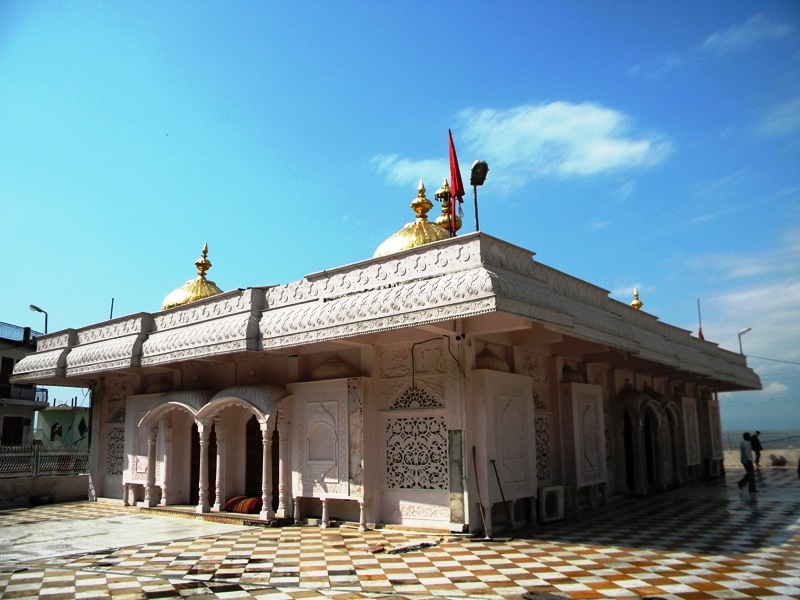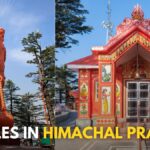
Exploring the Divine Flames: A Pilgrim’s Guide to Jawalamukhi Temple
Nestled in the serene Kangra Valley of Himachal Pradesh, Jawalamukhi Temple is one of the most revered Shakti Peethas in India. Known for its eternal flames, this sacred site attracts thousands of devotees, spiritual seekers, and tourists every year. Unlike other temples that house idols, Jawalamukhi Temple is unique because it enshrines natural flames that mysteriously burn from fissures in the rock. The temple’s mystical aura, religious significance, and scenic surroundings make it an essential destination for devotees and travelers alike.
The Legend Behind Jawalamukhi Temple
The origins of Jawalamukhi Temple trace back to Hindu mythology. It is believed that when Sati, the consort of Lord Shiva, immolated herself in the sacrificial fire, Lord Shiva carried her charred body across the universe in grief. To pacify him, Lord Vishnu dismembered Sati’s body, and each part fell at different locations, which later became the Shakti Peethas. Jawalamukhi Temple is where Sati’s tongue is said to have fallen, and from this sacred ground, the eternal flames emerged.
The legend further narrates that the flames symbolize the unquenchable divine energy of Goddess Durga. Even the Mughal Emperor Akbar, amazed by the ever-burning flames, attempted to douse them, but all his efforts failed. Recognizing the temple’s sanctity, he donated a golden umbrella, which, as per lore, turned into an unknown metal—further reinforcing the divine power of the place.
The Enchanting Eternal Flames
Jawalamukhi Temple is renowned for the nine eternal flames, each representing a different form of Goddess Durga:
- Mahalakshmi
- Mahakali
- Saraswati
- Annapurna
- Chandi
- Hinglaj Bhavani
- Vindhya Vasini
- Ambika
- Anjana Devi
These flames have been burning continuously for centuries without any fuel or external source. Devotees believe that witnessing the flames fulfills wishes and brings spiritual enlightenment.
Architectural Marvel and Temple Complex
The temple’s architecture exhibits a unique blend of Hindu and Mughal influences. The entrance to the temple is adorned with golden pinnacles, and the sanctum sanctorum houses the sacred flames. The premises also feature intricate carvings, reflecting the devotion and artistry of ancient Indian craftsmanship. The ambiance is further enhanced by the rhythmic chants, ringing bells, and the fragrance of incense that envelops the air.
Adjacent to the temple is a sacred water tank, believed to have healing properties. Many pilgrims take a dip in the water before offering prayers. The temple complex also includes shrines dedicated to Lord Shiva, Lord Hanuman, and other deities.
Festivals and Celebrations at Jawalamukhi Temple
The temple is a hub of religious fervor throughout the year, with two major festivals drawing huge crowds:
Navratri
Navratri, celebrated twice a year (March-April and September-October), is the grandest festival at Jawalamukhi Temple. Devotees flock from different parts of India to seek the blessings of Goddess Durga. The temple is beautifully decorated with lights and flowers, and special prayers and bhajans (devotional songs) are performed continuously.
Jwalamukhi Fair
Held in March-April and September-October, this fair attracts a large number of devotees, traders, and tourists. The entire temple town transforms into a vibrant hub of religious activities, cultural performances, and local fairs offering traditional Himachali artifacts and cuisine.
How to Reach Jawalamukhi Temple
The temple is well-connected to major cities via road, rail, and air.
- By Air: The nearest airport is Gaggal Airport (Kangra Airport), about 50 km away. From there, taxis and buses are available.
- By Rail: The nearest railway station is Jawalamukhi Road, approximately 20 km from the temple. A more convenient option is Pathankot Railway Station, which is about 100 km away.
- By Road: Jawalamukhi is well connected by road to major towns like Dharamshala, Kangra, and Pathankot. Himachal Pradesh Road Transport Corporation (HRTC) operates regular bus services.
Best Time to Visit
While the temple is open year-round, the best time to visit is during the Navratri festival (March-April and September-October) when the temple atmosphere is electrifying with devotion and celebrations. Additionally, the months from October to March offer pleasant weather, making it ideal for sightseeing and spiritual visits.
Nearby Attractions
For those visiting Jawalamukhi, there are several nearby attractions worth exploring:
- Kangra Fort: One of India’s oldest forts, offering breathtaking views and historical insights.
- Mcleodganj: A Tibetan cultural hub, home to the Dalai Lama’s residence and stunning monasteries.
- Chintpurni Temple: Another famous Shakti Peetha, located around 35 km from Jawalamukhi.
- Masroor Rock Cut Temples: An architectural marvel with monolithic rock carvings dating back to the 8th century.
Final Thoughts: A Must-Visit Spiritual Destination
Jawalamukhi Temple is not just a pilgrimage site but also a place of divine mystery, spiritual enlightenment, and cultural heritage. Whether you’re a devotee seeking blessings, a traveler exploring India’s religious diversity, or a nature lover soaking in the beauty of Himachal Pradesh, a visit to Jawalamukhi Temple is an experience of a lifetime.
Plan your trip to Jawalamukhi Temple and immerse yourself in the divine energy of the eternal flames. For more insights on trekking, travel guides, and spiritual destinations, visit Dhauladhar Trek and embark on an unforgettable journey through the mystical landscapes of Himachal Pradesh.



Religions place